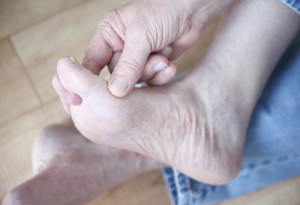 As we advance in age, our bodies naturally undergo changes that force us to take better care of our health. Senior citizens know this all too well. They have experienced the inevitable decline in muscle strength, coordination, balance and recovery.
As we advance in age, our bodies naturally undergo changes that force us to take better care of our health. Senior citizens know this all too well. They have experienced the inevitable decline in muscle strength, coordination, balance and recovery.
They are also more vulnerable to certain types of illnesses that used to be far from their minds in their youth. Once they contract these diseases, the effects are often severe as their bodies have a hard time dealing with the issues. Toenail fungus is a good example of this. The microorganism is estimated to cause pain and discomfort to around 20% of the elderly.
Lower Immune Response
The fungus is present in a wide variety of settings. Young and old alike are often exposed to them, especially those who lead an active lifestyle or go barefoot quite frequently.
The difference is that young people typically have an excellent immune system. Immunity falters as we age and so seniors cannot engage with the fungus as effectively.
Once it gets underneath the toenail, it will try to grow and reproduce until the mass gets so thick that the nail may separate. Discoloration often occurs wherein the usual pink flush becomes a dull yellowish brown.
A High Likelihood of Peripheral Diseases
Seniors must do their best to maintain good hygiene to reduce the chances of getting the disease. Although it is not fatal, it can lead to secondary infections that could become serious. When young people acquire the fungus, it usually does nothing more than irritate them or make them conscious of their toes. Many choose to ignore the problem altogether. When the elderly has it, the situation requires immediate attention. Seniors tend to have an assortment of other illnesses (such as diabetes) that could make the fungal infection extremely difficult to treat.
Common Treatment Methods
If toenail fungus is suspected, consult a doctor immediately. Physicians can take samples to tell you if the discoloration is indeed caused by fungi.
A suitable treatment plan will then be formulated. It will depend on the patient’s medical history, age, preference, and several more factors. Doctors may recommend a topical cream for long term application. They may also prescribe an oral drug to combat the infection from within. They will consider any current medication and possible interactions to avoid unwanted side effects.
Prolonged Routine is Impractical
Toenail fungus has a tendency to be very persistent. Traditional methods of treatment generally last for several months up to a year. Enormous patience and dedication is required to keep up the routine day in and day out for such lengths of time. This is hard enough for the average person given all the things that could disrupt the schedule.
The task becomes much more difficult if asked of the elderly. They may forget to take their medicine on time or fail to do so completely. The inconsistency will only render the treatment ineffective. Either they are constantly monitored or provided with a viable alternative.
A Faster Toenail Fungus Treatment for Seniors
Laser treatment is an excellent alternative for older people who wish to do away with daily pills and their side effects.
It is a quick and comfortable way to zap away the fungus and inhibit its further growth. Strong pulses of light will be directed to every millimeter of the nails in a grid pattern to ensure complete coverage. The heat generated is safe for humans but devastating for the unwanted microorganisms. One session is all that’s needed in most cases and patients can walk away pain-free.


